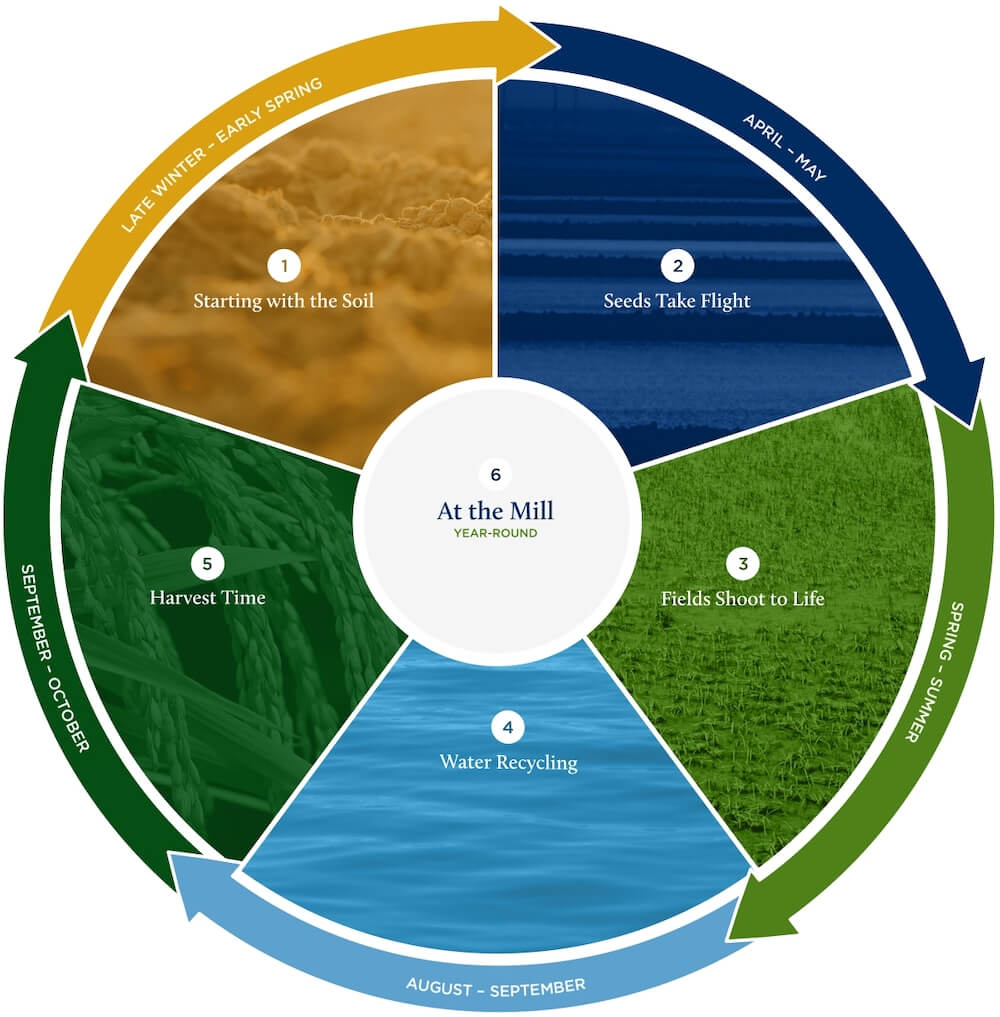How Rice Grows in California
An inside look at how water, wildlife, and world-class farming come together to grow one of California’s most iconic crops.
America’s Sushi Rice Starts Here
In the Sacramento Valley, 500,000 acres of rice thrive in our warm Mediterranean climate to produce the rice that’s shipped nationwide — and ultimately to your plate!

Starting with the Soil
Fields are leveled to spread water evenly — essential for growing rice and optimal water use.
Seeds Take Flight
Seeds are soaked in water to kickstart germination, then dropped by airplane into shallow-flooded fields.
Fields Shoot to Life
Within a few days, tiny rice shoots poke above water, while birds and wildlife thrive in their temporary wetland homes.
Water Recycling
As rice matures, farmers drain and recycle the water in the fields to irrigate other crops or return to the environment.
Harvest Time
Combines cut the rice and separate the grains, all in one go. Farmers work fast to yield nearly 8,500 lbs. of rice per acre before the rain arrives!
At the Mill
The rice is dried, cleaned, milled, packaged, and shipped across the U.S. for your kimchi fried rice, buddha bowls, and paella!
Farming for Wildlife
After harvest, many farmers re-flood their fields with a few inches of water, which helps:
Check out which animals call rice fields home year–round
Want to Learn More?
Our answers to frequently asked questions about rice.
We have developed many varieties of rice in California, each exhibiting distinct characteristics such as texture, aroma, stickiness, and color. Currently, we cultivate approximately 40 different varieties.
Rice is among the most environmentally friendly crops, offering habitat for numerous species of wildlife in our fields, both during its growth and in winter when we reflood the fields to decompose the rice straw.
We drain and recycle the water in the fields and use big combines to harvest the rice when it is perfectly ripe.
Milling is the process of removing the outer hull of the rice resulting in brown rice. If the customer orders white rice, we gently rub off the outer bran layers until the white inner kernel remains.
Both brown rice and white rice come from the same plant. Brown rice just has the bran layers still on the kernel surface. White rice is milled, removing the bran.
